Tips for hiking this summer from your therapist : Brock Anderson
With summer season arriving a bit early, I’m sure many who hike have already made some opportunities to do so. As the snow line starts to dissipate we open ourselves to higher altitudes, and with that, longer hikes! We will discuss a few things on how to prepare yourself for the hiking season, and the benefits to be reaped from getting out and improving your form.

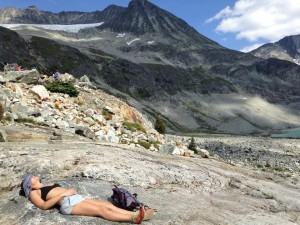
I’ll be honest when I say hiking has only sparked my interest in the last few years. My feet were super glued to bike pedals since I was a kid, which left me with horse blinders in regards to other outdoor activities. I always felt like hiking could never amount to the adrenaline rush of riding mountain bikes, but have definitely proven that to not be the case. A few noteworthy moments include running/boulder hopping down the creek that returns between the 2nd and 3rd peak at Stawamus Chief, traversing the wildly exposed cruxes summiting the Western Lion, and playing on this ridge line near the top of Crown Mtn.
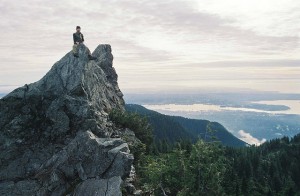
Aside from the wonderfully positive mental benefits that come with exercise, fresh air and beautiful landscapes, there are the obvious – and not so obvious – physical benefits to hiking. There is plenty of information on how walking/hiking can improve systemic health (cardiovascular, respiratory etc.), but we are going to focus on hiking related to your core. Before we dive into it, we’ll briefly touch on the anatomy of the core, as many people still see the core as being just your abs, and think if they can’t grate cheese on them, they must have a weak core. Your core is actually a much larger system, which includes most muscles with spinal attachment through your back, abdomen, pelvic floor and glutes/hips.
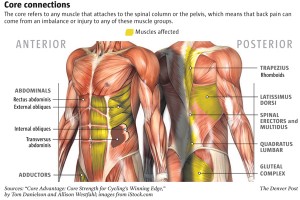
If you’re one of those people who enjoy the gym – or at least have the will power to go – Dr. McGill and “the Big 3” should be your starting point for core exercise and stability. If you are someone like me who needs to find fitness in other ways – sport and recreation – then hiking can be a great alternative for stimulating core activity, particularly those hikes that include steeper grade and scrambling. Due to the full body involvement of scrambling, this can be great for core exercise if done properly. Some things to keep in consideration while scrambling: Maintaining an upright torso / neutral spine as best you can, avoid flexing with your back and in turn flex with your hips. Actively engaging muscle you will be using, it is best to ‘fire’ or tighten groups of muscle before loading them. (This will minimize risk of strains and other injuries).
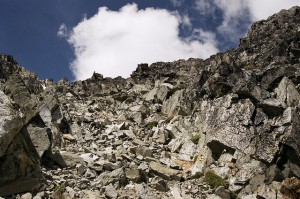
Check out the link below for Dr. McGill’s core exercises
–> https://www.youtube.com/watch?v=kukmaW9CmSU
For us to get the most out of our strides while hiking (or walking), we will likely need to awaken, and focus our attention on actively engaging our glutes (glute max in particular) during extension. If you spend the majority of your days sitting, or have had previous ankle/knee injuries, you likely have an inhibited glute max. This condition is commonly referred to as hamstring dominant hip extension, or ‘gluteal amnesia’, where glute max is no longer the agonist/primary mover. This can lead to altered movement patterns, weakened core, postural dysfunctions and pain. A simple way to start your progression to a strong glute max, is bringing consciousness to it and actively engaging it throughout your hikes during hip extension. This is done by tightening your glute (on the same side) as your leg draws behind you (stance phase of the gait cycle). You will notice considerable power improvement from actively using your glutes over your hamstrings.
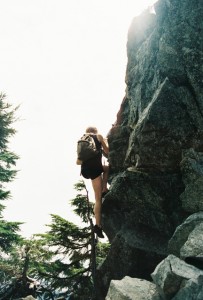
Retraining the glutes and restoring proper muscle balance will take some time, as your current neural movement pattern has likely been that way for some time, but by bringing a conscious mind to it we can begin our journey to a happier core, decrease our chances of hamstring injury, and push that little bit harder during our hikes.

For a personalized glute / core program – or some hiking recommendations – come see myself in the clinic!
Until then,
Happy Trails.
Brock Anderson, RMT
**all photos taken by myself, more can be found here https://www.flickr.com/photos/brockanderson **
References
Freeman S, Mascia A. McGill S. Anthrogenic neuromusculature inhibition: a foundational investigation of existence in the hip joint. Clin Biomech, 2013. Feb 28.
Donald J. Fedoryk, DC, CCSP, DACRB. Hip Extension and Adbuction Dysfunction. 2011.

